
Mastering SaaS Security Posture Management: A Complete Guide
Businesses depend increasingly on Software-as-a-Service (SaaS) apps in today’s digital environment to improve productivity and streamline operations. However, controlling their security posture has become a major concern with the spread of SaaS products. To address this issue, SaaS Security Posture Management (SSPM) has become a potent solution that enables enterprises to uphold a strong security posture throughout their SaaS ecosystem. This thorough tutorial explores the SSPM’s capabilities, benefits, and intricacies, equipping you with the knowledge and skills necessary to strengthen your SaaS security posture.
What is SaaS?
A third-party vendor hosts and manages programs made available to consumers over the Internet under Software-as-a-Service (SaaS) terms. This cloud-based software delivery model usually involves a subscription-based pricing structure. Because SaaS apps can be accessed from anywhere, there is no need for installation or maintenance to be done on-site, which lowers operating costs and complexity.
What is SPM (Security Posture Management)?
Security Posture Management (SPM) is a comprehensive approach to assessing, managing, and improving an organization’s overall security stance. It involves continuous monitoring, evaluation, and remediation of security controls, configurations, and vulnerabilities across an organization’s IT infrastructure, including cloud services, on-premises systems, and endpoints.
What is SaaS Security Posture Management (SSPM)?
SaaS Security Posture Management (SSPM) is a specialized discipline within SPM that focuses specifically on managing the security posture of an organization’s SaaS applications. SSPM solutions provide centralized visibility, control, and automation capabilities to oversee the security configurations, access controls, and compliance requirements of SaaS applications from various vendors.
How does SSPM work?
SSPM solutions typically work by integrating with the APIs and security controls provided by SaaS vendors, allowing organizations to monitor, assess, and remediate security risks across their SaaS ecosystem. The core functionalities of SSPM include:
Discovery and Inventory:
SSPM solutions automatically discover and maintain an up-to-date inventory of all SaaS applications used within the organization, including authorized and unsanctioned (shadow IT) applications.
Continuous Monitoring:
SSPM platforms continuously monitor the security configurations, access controls, and compliance posture of SaaS applications, alerting administrators to deviations from defined policies or best practices.
Risk Assessment and Prioritization:
By identifying and prioritizing security risks according to their severity, effect, and likelihood, SSPM solutions help organizations concentrate their repair efforts on the most important problems.
Automated Remediation:
Many SSPM solutions offer automated remediation capabilities, allowing administrators to apply security configuration changes, revoke unnecessary access privileges, or take corrective actions across multiple SaaS applications with a few clicks.
Compliance and Reporting:
With the help of SSPM platforms’ extensive reporting and auditing capabilities, businesses can show that their SaaS application’s internal security rules and industry requirements are being followed.
What are the three key benefits of SSPM?
Centralized Visibility and Control:
SSPM solutions provide a centralized dashboard and control plane, enabling organizations to gain visibility into their entire SaaS ecosystem and manage security configurations, access controls, and compliance requirements from a single window.
Improved Security Posture:
By continuously monitoring and remediating security risks across SaaS applications, SSPM helps organizations maintain a strong security posture, reducing the attack surface and minimizing the potential impact of security breaches.
Operational Efficiency:
Many of the manual processes involved in SaaS security management, like finding new apps, evaluating setups, and carrying out remediation measures, are automated by SSPM. Security teams can concentrate on more strategic tasks because of this automation, which lessens their operational burden.
Key Features of SaaS Security Posture Management:
SaaS Discovery and Inventory Management:
SSPM solutions automatically discover and maintain an up-to-date inventory of all SaaS applications used within the organization, including authorized and unsanctioned (shadow IT) applications.
Continuous Monitoring and Risk Assessment:
SSPM platforms continuously monitor the security configurations, access controls, and compliance posture of SaaS applications, identifying and prioritizing security risks based on their severity and impact.
Policy Management and Enforcement:
SSPM solutions enable organizations to define and enforce security policies across their SaaS ecosystem, ensuring consistent security configurations and access controls aligned with industry best practices and regulatory requirements.
Access Control and Privilege Management:
SSPM platforms provide visibility into user access privileges and enable organizations to manage and revoke unnecessary or excessive permissions, minimizing the risk of data breaches and unauthorized access.
Automated Remediation and Enforcement:
Many SSPM solutions offer automated remediation capabilities, allowing administrators to apply security configuration changes, revoke unnecessary access privileges, or take corrective actions across multiple SaaS applications with minimal manual effort.
Compliance Reporting and Auditing:
With the help of SSPM platforms’ extensive reporting and auditing capabilities, businesses can show that their SaaS application’s internal security rules and industry requirements are being followed.
Integration and API Support:
SSPM solutions typically integrate with the APIs and security controls provided by SaaS vendors, allowing for seamless monitoring, assessment, and remediation of security risks across various SaaS applications.
Risk Scoring and Prioritization:
SSPM platforms often include risk scoring and prioritization mechanisms, helping organizations focus their remediation efforts on the most critical security risks based on their potential impact and likelihood.
Incident Response and Forensics:
SSPM systems can offer important forensic information and insights to support incident response, investigation, and root cause analysis in the case of a security occurrence.
Reporting and Dashboards:
SSPM platforms offer customizable reporting and dashboarding capabilities, enabling organizations to visualize their SaaS security posture, track key performance indicators (KPIs), and communicate security metrics to stakeholders.
Challenges in Managing SaaS Security Posture
Proliferation of SaaS applications (Shadow IT):
As organizations embrace the convenience and flexibility of SaaS solutions, the number of applications in use can rapidly grow, often leading to the emergence of unsanctioned or “shadow IT” applications. This lack of visibility and control over the entire SaaS ecosystem can introduce significant security risks.
Lack of visibility and control:
Compared to traditional on-premises software, SaaS apps function outside an organization’s conventional security perimeter, making it difficult to retain visibility and control over their security setups, access controls, and data handling procedures.
Disparate security configurations and controls:
Each SaaS vendor may have different security controls, configuration settings, and APIs, making it difficult to consistently manage and enforce security policies across multiple SaaS applications.
Compliance complexities:
Businesses must ensure that their SaaS apps abide by industry rules and guidelines, including GDPR, HIPAA, and PCI DSS. Maintaining compliance in a broad SaaS environment might take a lot of work.
Insider threats and access management:
With SaaS applications accessible from anywhere, organizations must carefully manage user access privileges and monitor for potential insider threats, such as disgruntled employees or compromised accounts.
Choosing the Right SSPM Solution
Key factors to consider (scalability, integration, automation, etc.):
Organizations should consider characteristics like automation to expedite security operations, scalability to support future expansion, and integration with current security solutions when choosing an SSPM solution.
Evaluating vendor capabilities and roadmap:
It’s crucial to assess the vendor’s expertise, track record, and long-term product roadmap to ensure the SSPM solution can adapt to evolving security requirements and support new SaaS applications as they are introduced.
Deployment models (cloud-based, on-premises, hybrid):
SSPM solutions may be offered as cloud-based, on-premises, or hybrid deployments. Organizations should choose the deployment model that best aligns with their security requirements, infrastructure preferences, and compliance needs.
Pricing and licensing considerations:
Different price models, such as subscription-based or perpetual licenses, may be available for SSPM solutions. Businesses should carefully consider the entire cost of ownership, which includes any extra money paid for upgrades, add-on features, and support.
SSPM Implementation and Adoption
Building a cross-functional team:
Successful SSPM implementation requires collaboration between various teams, including IT, security, compliance, and business units. A cross-functional team can ensure alignment and buy-in across the organization.
Defining security policies and guidelines:
It is recommended that organizations set explicit security policies and standards to regulate the use, configuration, and control of access to SaaS applications. These rules should reflect legal obligations and industry best practices.
Integrating with existing security tools:
Identity and Access Management (IAM) programs, vulnerability management systems, and Security Information and Event Management (SIEM) platforms are a few examples of the security technologies that a business may already have in place. SSPM solutions should work in unison with these tools.
User awareness and training:
Educating employees on the importance of SaaS security and their role in maintaining a strong security posture is crucial. Regular training and awareness campaigns can help mitigate human error or negligence risks.
Change management and communication:
Implementing an SSPM solution may require changes to existing processes and workflows. Effective change management and clear communication can ensure a smooth transition and minimize disruptions.
Best Practices for SSPM Success
Establish a centralized SaaS inventory:
Maintain an up-to-date inventory of all SaaS applications used within the organization, including authorized and unsanctioned (shadow IT) applications. This visibility is crucial for effective security posture management.
Continuously monitor and assess risks:
Regularly monitor the security configurations, access controls, and compliance posture of SaaS applications, identifying and prioritizing potential risks based on their severity and impact.
Implement least privileged access controls:
When allowing users access to SaaS applications, use the concept of least privilege and ensure they have the minimal rights required to perform their assigned responsibilities.
Automate remediation and enforcement:
Leverage the automated remediation capabilities of SSPM solutions to rapidly apply security configuration changes, revoke unnecessary access privileges, or take other corrective actions across multiple SaaS applications.
Regularly review and update security policies:
Review and update security policies frequently to keep them up to speed with evolving security risks, new SaaS apps being added to the organization, and evolving regulations.
The Role of SSPM in a Comprehensive Security Strategy
SSPM as part of a layered security approach:
SSPM should be integrated into an organization’s overall security strategy as part of a layered approach that includes other security controls and tools, such as firewalls, endpoint protection, and web application firewalls.
Integration with other security tools (SIEM, IAM, CASB):
SSPM solutions should integrate seamlessly with the Identity and Access Management (IAM), Cloud Access Security Brokers (CASB), and Security Information and Event Management (SIEM) systems that are now a part of an organization’s security infrastructure.
Aligning SSPM with broader security and compliance initiatives:
SSPM efforts should be aligned with an organization’s broader security and compliance initiatives, ensuring consistency and synergy across various security domains.
Leveraging SSPM for incident response and forensics:
When a security incident involving SaaS applications, SSPM solutions can offer useful forensic information and insights to support the investigation, incident response, and root cause analysis.
Future Trends and Emerging Challenges in SaaS Security Posture Management
Artificial Intelligence and Machine Learning for Risk Prediction:
SSPM vendors increasingly leverage AI and machine learning techniques to improve risk prediction, anomaly detection, and automated remediation capabilities.
Increased focus on data security and privacy (GDPR, CCPA, etc.):
With stricter data privacy regulations like GDPR and CCPA, SSPM solutions must evolve to support organizations in maintaining compliance and protecting sensitive data stored or processed by SaaS applications.
Securing SaaS applications in multi-cloud and hybrid environments:
SSPM solutions must change to manage the security posture of SaaS applications across various cloud platforms and on-premises settings as enterprises embrace multi-cloud and hybrid cloud strategies.
Addressing new types of threats (e.g., supply chain attacks):
SSPM solutions must continuously evolve to address emerging threats, such as supply chain attacks, where malicious actors compromise trusted software or service providers to gain unauthorized access to an organization’s systems.
Top Trending Software for SaaS Security Posture Management (SSPM):
Cisco Cloudlock

Cisco Cloudlock provides comprehensive CASB and SSPM capabilities, offering advanced data loss prevention, user behavior analytics, and automated remediation across popular SaaS apps like Microsoft 365, Google Workspace, Salesforce, and more. Its machine learning-powered risk engine helps identify and mitigate SaaS security risks proactively.
Saviynt
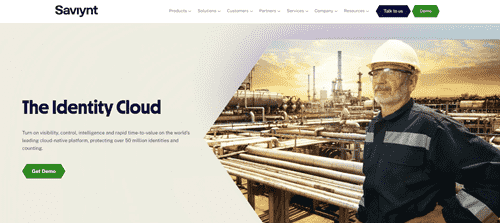
Saviynt’s SSPM solution offers robust SaaS discovery, risk assessment, and access governance capabilities. Its intelligent analytics and risk scoring help prioritize risks, while its granular access controls and policy enforcement ensure secure SaaS usage. Saviynt integrates with leading SaaS vendors and identity providers.
Salesforce Cloud Access Manager
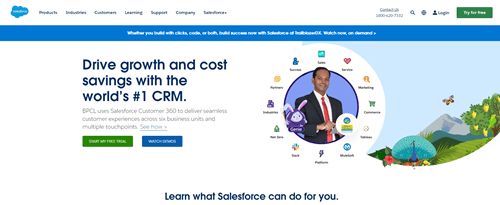
As a Salesforce-native solution, Cloud Access Manager provides deep visibility and control over the Salesforce ecosystem, including apps, data, and user activity. It offers data loss prevention, threat detection, and compliance monitoring tailored for Salesforce environments.
Obsidian Security
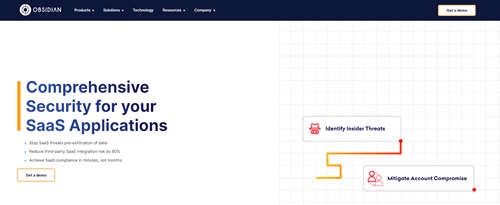
Obsidian Security is a cloud-native SSPM solution that offers comprehensive SaaS discovery, risk assessment, and automated remediation capabilities. Its machine learning-powered risk scoring and detailed compliance reporting help organizations maintain a strong SaaS security posture.
Appian

Appsian’s SSPM and application security solution helps secure popular SaaS apps like Salesforce, ServiceNow, and Microsoft 365. It offers data protection, access control, and compliance monitoring capabilities, ensuring secure SaaS usage and data handling.
Grip Security
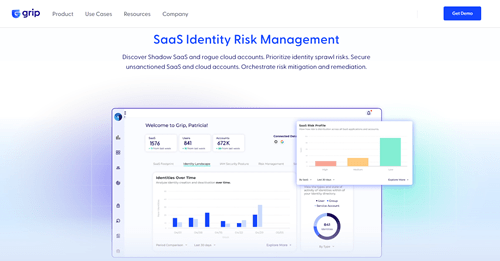
Grip Security’s SSPM platform provides visibility, control, and compliance for SaaS applications used within an organization. It offers risk assessment, automated remediation, and policy enforcement features to maintain a strong SaaS security posture.
Avanan
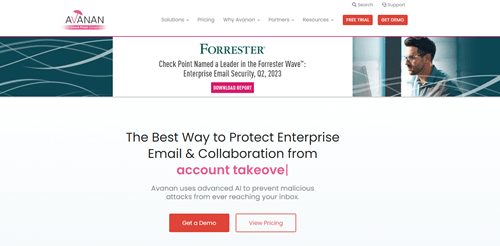
Avanan is a cloud-based SSPM solution that offers security and compliance controls for Microsoft 365, Google Workspace, Salesforce, and other SaaS apps. Its features include data loss prevention, malware protection, access control, and advanced threat protection.
Centrify
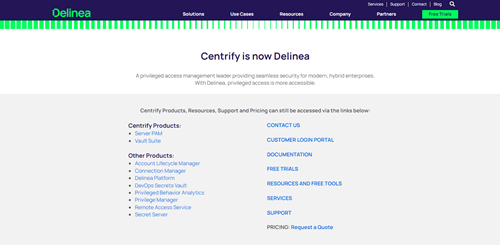
Centrify’s identity and access management (IAM) solution includes SSPM capabilities for managing SaaS application access, enforcing least privilege access controls, and monitoring user activity. It helps organizations secure their SaaS ecosystem and maintain compliance with industry regulations.
FAQs:
Is SSPM only applicable to large enterprises, or can it benefit smaller organizations, too?
SSPM solutions can benefit organizations of all sizes that rely on SaaS applications. While larger enterprises may have more complex SaaS ecosystems, smaller organizations can leverage SSPM to gain visibility and control and improve their overall security posture.
How does SSPM differ from traditional security tools like firewalls or endpoint protection solutions?
While SSPM solutions are specifically made to handle the special security concerns of cloud-based SaaS apps, which frequently run outside an organization’s traditional security perimeter, traditional security tools largely concentrate on on-premises infrastructure and endpoints.
Can SSPM solutions integrate with existing security and identity management tools?
Many SSPM solutions offer integrations with popular security and identity management tools, such as Security Information and Event Management (SIEM) platforms, Identity and Access Management (IAM) solutions, and vulnerability management systems. These integrations enable organizations to consolidate security data and streamline security operations.
How does SSPM handle shadow IT (unsanctioned SaaS applications)?
A: SSPM solutions typically include capabilities to discover and identify unsanctioned (shadow IT) SaaS applications used within the organization. This visibility enables organizations to assess the security risks associated with these applications and take appropriate actions, such as bringing them under centralized management or blocking their usage.
Can SSPM solutions automatically remediate security risks or require manual intervention?
Many SSPM solutions offer automated remediation capabilities, allowing administrators to apply security configuration changes, revoke unnecessary access privileges, or take corrective actions across multiple SaaS applications with minimal manual effort. However, some organizations may prefer to review and approve remediation actions before they are applied, depending on their security policies and risk tolerance.
How does SSPM address compliance requirements for SaaS applications?
SSPM platforms’ extensive reporting and auditing capabilities help businesses show that their SaaS application internal security rules and industry requirements are being followed. By enforcing security configurations, access restrictions, and data handling procedures in accordance with pertinent standards and regulations, SSPM systems can assist enterprises in maintaining compliance.
Conclusion:
In conclusion, SaaS Security Posture Management is paramount in safeguarding digital assets and ensuring compliance in today’s dynamic landscape. By implementing robust strategies and leveraging advanced technologies, organizations can fortify their defenses, mitigate risks, and foster trust among stakeholders. With proactive monitoring, continuous improvement, and a strategic approach, businesses can navigate the complexities of cybersecurity with confidence, empowering growth and innovation in the digital age.




